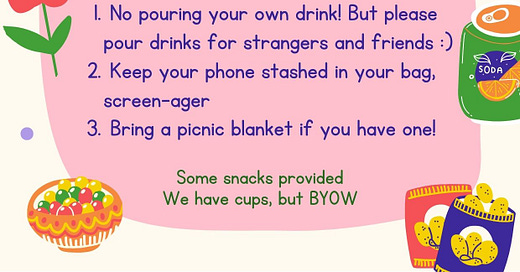I love to host. I love when my friends become friends. I love cooking for my loved ones, and sitting around the couch after dinner for a glass of wine and a game.
So when I read Priya Parker’s The Art of Gathering, I was completely captivated. It’s a book about “how and why we gather,” but more so how we can gather better, fostering deeper, more meaningful connections at our gatherings.
Parker’s thesis is that every gathering has a purpose, whether implicit or explicit and that everything about a gathering from the guest list to the goodbye and everything in between should ultimately serve that purpose. We often don’t put enough thought or care into the reason we are gathering before we jump into the logistics, failing to properly foster the intimacy and connection we all crave. Parker gives a number of helpful insights about how we can all improve our gatherings with this ultimate goal of connection in mind. After putting down the book, I was eager to put these new insights into action.
Elena and I had been wanting to host a spring park party but we weren’t sure what the purpose should be. With Quinn and Dani’s visit upcoming, I decided that connecting my oldest friends to my new friends in Madrid would make a great purpose. When making the guest list I stuck to Parker’s advice: if the purpose of this gathering was for Quinn and Dani to meet and connect with our closest friends in Madrid, then that’s who should be invited and a small gathering would be crucial in fulfilling that purpose. But I was put to the test when a friend I had invited asked me if she could bring along someone else - someone who I’ve chatted with at parties but am not that close with. Before reading The Art of Gathering I probably would’ve said yes. What’s the harm in one more person? But I remembered Parker’s warning, “the more the scarier, not the merrier” and kindly told my friend we were trying to keep the party small.
The next step was the invitation, which I learned from my reading was my first opportunity to set the tone for the event. I decided to use Parker's idea of “pop up rules,” which she defines as a “temporary, accessible set of instructions to help a group of disparate people participate in a shared experience.” I included 2 - and set the ground rules on the invitation.
No pouring your own drink! But please pour drinks for strangers and friends!!
Keep your phone in your bag, screen-ager.
The point of the first rule was to encourage my friends from different circles to engage with each other. It didn’t work quite as much as I had hoped it would since we were sitting on a picnic blanket and people mostly just asked whoever was sitting closest to the drinks (me) to pour one for them, rather than using it as a way to chat with new people. I love the idea of this rule though and think it could be much better implemented at a party where people are standing up and milling around.
The purpose of the second rule is obvious. No one likes being at a party where everyone is on their phones and no one’s actually talking to each other (Am I turning into my Dad? Yes.). That said, I was a little nervous to actually enforce it. Would my friends think I was being tyrannical and overbearing? Annoying or pretentious? I was delighted to find that the response was quite the opposite: gratitude. While at first, a few had forgotten and had their phones out, Elena expertly and gently reminded them of the pop up rule and they obliged. In moments of awkward silence where a friend might have normally turned to their phone, they instead searched for a new conversation starter, a fun question to break the ice. I delighted in watching my friends from different worlds engage with each other without a phone in sight.
All in all the party was a success. We drank wine and munched on charcuterie, reveling in another beautiful Madrid sunset as friends from different parts of my life came together and bonded. Would it have been a good party had I not thought about the purpose, been so intentional about the guest list and incorporated the pop up rules? I think it would have been fine and enjoyable enough, but standard and everyday.
I’ve also begun to see The Art of Gathering’s relevance beyond what we typically think of as gatherings. Parker notes the importance of a gathering’s opening and closing. In a sense, every day is a gathering with yourself and the openings and closings of our days are also crucial. For the past 3 weeks I’ve been journaling every morning which has been serving as the opening ceremony of my days - giving me time and space to wake up and reflect before I head to work. I’m still working on finding an every day closing ceremony that works for me (let me know if you have tips!). My time in Madrid is another gathering of sorts that deserves an intentional closing ceremony, both with my friends and the city itself. Perhaps I’ll spend time at my favorite spot in Madrid, the rose garden by my apartment and have a moment alone with the sunset. Or I could leave a love letter to Madrid in the drawers of Lolina. Maybe I’ll do both. I’ve been inspired to be just a little more intentional about how I gather both with myself and my loved ones.
P.S. If The Art of Gathering sounds at all interesting to you I highly recommend reading it, or for a condensed explanation watching Priya Parker’s Ted Talk.




